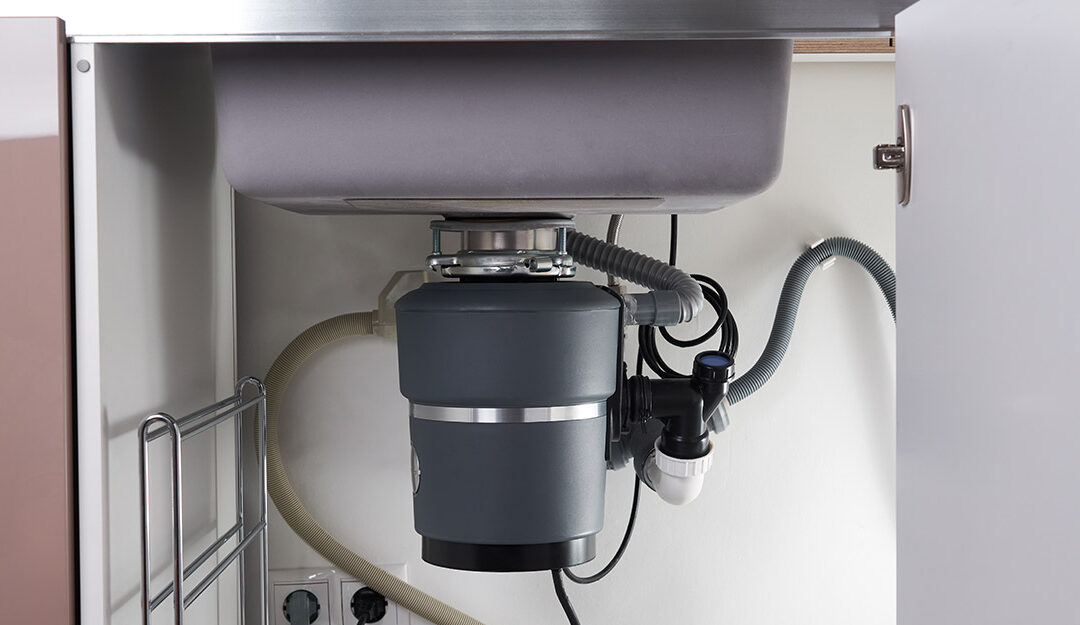Introduction:
Garbage disposals are a staple in many modern kitchens, offering convenience in waste management. However, like all appliances, they come with their set of challenges. From understanding the common causes of clogs to debunking popular myths, this blog provides a comprehensive look into the world of garbage disposals. Whether you’re troubleshooting a persistent issue or simply looking to optimize the longevity of your unit, this article offers valuable insights.
What Causes a Clog?
- Food Debris: Over time, food particles can build up and create blockages. Items like coffee grounds, eggshells, and starchy foods are common culprits. Coffee grounds, in particular, can combine with other debris, forming a thick paste that impedes the disposal’s function. Eggshells, on the other hand, can scatter into tiny, granular pieces that mix with other waste, leading to dense obstructions.
- Foreign Objects: Non-food items, such as utensils, sponges, or even jewelry, can accidentally fall into the disposal and cause a jam. Utensils can become lodged between the blades, preventing them from rotating, while sponges can swell up, blocking the drain.
- Grease and Fat: These can solidify in the disposal and pipes, leading to obstructions. When hot, fats and oils might seem harmless as they flow down the drain, but as they cool, they congeal and stick to the inner walls of pipes.
The Warning Signs: How to Spot a Clog Early
- Slow Draining: One of the most noticeable signs of clogged garbage disposal is slow draining. If you notice that the water in your sink is draining more slowly than usual or if it is collecting at the base, there most likely is a blockage somewhere in the system.
- Unpleasant Odors: Over time, food particles that get trapped in the disposal start to decay, emitting a distinct and unpleasant odor. This smell is not just a minor inconvenience; it’s a clear sign that there’s rotting food debris lodged in the disposal or the drain pipe.
- Strange Noises: A fully functional garbage disposal should operate with a consistent sound. If you start hearing unusual noises like metallic grinding, it could mean a foreign object, like a utensil, is caught in the disposal. On the other hand, a humming sound without the typical grinding noise might indicate that the disposal is jammed and the blades are unable to rotate.
Prevention is better than Cure: Tips to Avoid Clogs
- Run Cold Water: Using cold water solidifies potential blockage-causing substances, allowing the disposal to break them down more efficiently. Additionally, cold water helps in maintaining the sharpness of the blades, ensuring they cut through waste more effectively.
- Avoid Problematic Foods: It’s essential to be selective about what goes down the disposal. Fibrous foods, like onion skins or corn husks, can wrap around the blades, causing jams. Moreover, hard foods like bones or fruit pits can damage the blades, reducing the disposal’s efficiency over time.
- Clean Regularly: A proactive approach can prevent many issues. Using a mixture of dish soap and cold water for a weekly rinse can help in preventing residue buildup. Incorporating a monthly deep clean with natural cleaners like baking soda and vinegar can further ensure the longevity and efficiency of your disposal.
DIY Solutions: Unclogging Your Disposal
- The Natural Cleaners: A homemade solution of vinegar and baking soda can act as a powerful cleaning agent. Allowing this mixture to fizz and react in the disposal before rinsing with hot water can break down many minor blockages.
- Manual Cranking: With the disposal powered off, using an Allen wrench to manually rotate the blades can help in freeing any trapped debris.
- Plunger Method: A plunger can create a strong suction, which can be effective in dislodging clogs, especially when combined with hot water.
Upgrading Your Disposal: Is It Time?
Garbage disposals wear down over time, leading to inefficiencies and malfunctions. Modern units, with advanced technology, offer enhanced performance compared to their older counterparts.
- Grinding Mechanisms: Newer models often have multi-stage grinding processes, ensuring that food waste is broken down more thoroughly, reducing the chances of clogs.
- Powerful Motors: Modern disposals come with more robust motors that can handle tougher food scraps with ease, from fibrous vegetables to tougher meat remnants.
- Noise Reduction: One common complaint with older units is the noise they produce. Contemporary models are designed with sound insulation and anti-vibration technology, offering a quieter operation.
- Safety Features: Newer models often incorporate features like auto-reverse, which can automatically free up jams without manual intervention.
Common Misconceptions about Garbage Disposals
- Lemons Clean Your Disposal: It’s a common practice for homeowners to drop lemon slices or peels into their disposal to combat unpleasant odors. The citric acid in lemons can help to some extent, but it’s not enough to tackle built-up grime or grease. For a more thorough clean, consider a combination of ice and salt.
- Ice Sharpens the Blades: Many think that by running ice cubes through the disposal, they’re helping to sharpen the blades. While ice doesn’t sharpen these impellers, it does play a useful role. Running ice through the disposal can help dislodge stuck-on debris from the grinding elements, ensuring smoother operation.
Conclusion:
Maintaining garbage disposal requires a blend of knowledge, preventive measures, and timely interventions. By being aware of the common culprits behind clogs, recognizing early warning signs, and implementing regular drain cleaning routines, homeowners can ensure the smooth operation of their disposals. Additionally, staying informed about common misconceptions can prevent unintentional damage. As technology advances, considering an upgrade can also be a step towards a more efficient and hassle-free kitchen experience.





